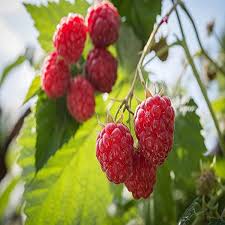Raspberry plants are a delightful and rewarding addition to any garden, offering not only vibrant greenery but also a generous yield of sweet, tangy berries that can be enjoyed fresh or used in countless culinary creations. Whether you’re a seasoned gardener or just beginning your horticultural journey, growing raspberries is a relatively simple endeavor that delivers big returns. In this article, we’ll explore everything you need to know about raspberry plants—from varieties and planting tips to care techniques and harvesting advice.
Understanding Raspberry Varieties
Raspberry plants are typically classified into two main types based on their fruiting habits: summer-bearing and everbearing (also known as fall-bearing).
-
Summer-bearing raspberries produce a single, large crop in early to mid-summer. These varieties are excellent for gardeners who want a concentrated harvest for canning or freezing.
-
Everbearing raspberries produce two crops: one in early summer and another in the fall. These are ideal for gardeners who enjoy a longer fruiting season and fresh berries for a more extended period.
Additionally, raspberry plants can be divided into color varieties, including red, black, purple, and golden raspberries. Red raspberries are the most common and are generally the easiest to grow, while black and purple varieties tend to be more vigorous and suited to different climates.
Choosing the Right Site
Raspberry plants thrive in well-drained, fertile soil and need full sunlight—at least six to eight hours of direct sunlight per day. The planting site should be sheltered from strong winds but open enough to allow good air circulation. This helps prevent fungal diseases, which raspberries are somewhat prone to.
Avoid areas where tomatoes, potatoes, peppers, or eggplants have recently grown, as they may carry soil-borne pathogens harmful to raspberry plants.
Planting Raspberry Canes
The best time to plant raspberry canes is in early spring, as soon as the ground can be worked. Space red and yellow varieties about 2 feet apart, with rows 6 to 8 feet apart. Black and purple raspberries should be spaced 3 to 4 feet apart, with similar row spacing.
Dig a trench deep enough to accommodate the roots, and plant the canes so the crown (where the roots meet the stem) is just above soil level. Water well after planting and apply a layer of mulch to retain moisture and suppress weeds.
Care and Maintenance
Raspberry plants are relatively low-maintenance but benefit greatly from consistent care:
-
Watering: Keep the soil consistently moist, especially during the growing season. Drip irrigation or soaker hoses are ideal for delivering water directly to the roots while minimizing leaf wetness.
-
Pruning: Pruning is essential for healthy raspberry plants and varies by type. Summer-bearing raspberries should be pruned after harvest by removing the canes that bore fruit. For everbearing varieties, you can prune them either traditionally (removing spent canes after each harvest) or mow all canes to the ground in late winter for a single fall crop.
-
Feeding: Apply a balanced fertilizer in early spring. Compost or well-rotted manure can also be used to improve soil fertility and structure.
-
Support: Use trellises or stakes to support the canes, which helps prevent breakage, improves air circulation, and makes harvesting easier.
Common Pests and Diseases
Raspberry plants can be affected by a range of pests and diseases. Some common issues include:
-
Aphids and Japanese beetles, which can be controlled with insecticidal soap or neem oil.
-
Gray mold (Botrytis) and anthracnose, both fungal diseases that thrive in wet conditions—pruning and proper spacing help minimize their spread.
-
Verticillium wilt, a soil-borne disease, can be avoided by careful site selection and crop rotation.
Maintaining healthy plants through good gardening practices is the best defense.
Harvesting and Enjoying Raspberries
Raspberries are ready to harvest when they come off the receptacle easily and have a rich, full color. Pick them every couple of days during the fruiting period to encourage more production. Handle berries gently, as they are delicate and can bruise easily.
Raspberries are perfect for fresh snacking, desserts, jams, jellies, smoothies, and even as toppings for salads or yogurt.
Final Thoughts
Raspberry plants offer both beauty and bounty to the home garden. With the right variety, proper care, and a little patience, you can enjoy delicious berries year after year. Whether you’re planting a small backyard patch or a larger berry farm, raspberries are a fruitful investment in sustainable, homegrown produce.
For gardeners seeking high-quality planting accessories, irrigation systems, and supplies to keep their raspberry patch thriving, visit superiorhydrola.com. With the right tools and knowledge, your berry-growing experience can be as sweet as the fruit itself.
- Raspberry Plants
- Raspberry plants are a delightful and rewarding addition to any garden, offering not only vibrant greenery but also a generous yield of sweet, tangy berries that can be enjoyed fresh or used in countless culinary creations.
- Raspberry Plants
Related posts:
 Discover Why Custom Greaseproof Paper Is Changing Food Packaging Forever
Discover Why Custom Greaseproof Paper Is Changing Food Packaging Forever
 How Custom Fast Food Boxes Are Making Packaging More Impactful Today
How Custom Fast Food Boxes Are Making Packaging More Impactful Today
 Custom CBD Oil Boxes: Why They’re Essential for Building Your Brand
Custom CBD Oil Boxes: Why They’re Essential for Building Your Brand
 Boost Your Business with Custom Printed Fish and Chip Paper Today
Boost Your Business with Custom Printed Fish and Chip Paper Today
 Discover the Benefits of Custom Heat Seal Paper for Your Business
Discover the Benefits of Custom Heat Seal Paper for Your Business
 Discover the Versatility and Visual Appeal of Custom Sleeve Box Packaging
Discover the Versatility and Visual Appeal of Custom Sleeve Box Packaging
 The best South Indian Sweets Online, we bring our heritage taste to your doorstep. Now delivering across India
The best South Indian Sweets Online, we bring our heritage taste to your doorstep. Now delivering across India
 Kitch: Mystic Village’s Premier Kitchen Store and Mixology Experience
Kitch: Mystic Village’s Premier Kitchen Store and Mixology Experience





